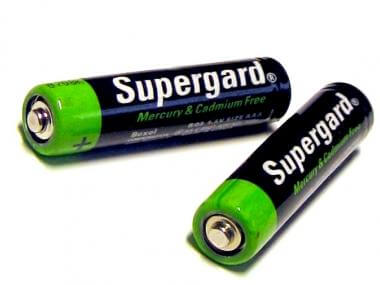What’s a Capacitor?
Capacitors are used in almost every single electronic device on the planet. Ask Science explores what they do and how they work.

If you were to take apart pretty much any electronic device in your home, mixed in with the various bits and bobs of circuitry you would find that one device appears over and over again. Capacitors come in a variety of shapes and sizes, but they all have the same job: to store up electricity. Let’s look at some of the science behind how they work.
A Long and Noble History
Way back in the 1700s, people knew about electricity, but still didn’t understand exactly what it was. For some time, scientists had been able to produce /education/science/what-is-static-electricity easily, but couldn’t really do anything useful with it. Many scientists believed that electricity was some kind of fluid, so they thought it might be possible to store it in a jar, just like any other fluid.
So one day, at the University of Leiden in the Netherlands, some scientists invented just such a jar, which came to be called a Leiden jar (though usually spelled with a “y” as Leyden jar). These special jars consisted of a glass jar with most of the inside lined with a thin metal foil. The outside and bottom of the jar were also lined with foil. The jar was sealed with some kind of insulating lid, such as wood or cork, and a brass rod was inserted inside, with a chain leading from the rod to the inner foil. Finally, the outside of the jar was “grounded,” which means it was connected to the earth by some form of conductor.
All Charged Up
When connected to a source of static electricity, /education/science/what-are-atoms flow into the jar through the metal rod, travel through the inner foil, and try to find a way out. However, since glass is an insulator, the walls of the jar keep the electrons from escaping and they just build up inside.
Meanwhile, all of those negatively charged electrons on the inner foil cause the electrons on the outer foil to get a bit edgy. As we learned in my previous episode on /education/science/what-is-static-electricity, like-charges repel. So the electrons on the outside of the jar want to get away from the excess inner electrons. Since the outside of the jar is grounded, those extra electrons escape to the earth.
Now we have an excess of electrons on the inside of the jar, and a deficiency of electrons on the outside of the jar. As you might also remember from the episode on /education/science/what-is-static-electricity, when we have a large difference in electrons between two surfaces, and those surfaces are connected in some way, the excess electrons flee rapidly in an electrostatic discharge. (The Florida State University Magnet Lab has that demonstrates how a Leyden jar works.)
When Benjamin Franklin learned about the Leyden jar, he conducted several experiments with it. In one of the experiments, he connected a group of jars together to see if he could store a more powerful charge. The arrangement reminded Franklin of a group of artillery weapons, so he referred to it by the same term, https://www.benfranklin300.org/frankliniana/result.php?id=72&sec=0.
Back to the Future
You’re probably thinking, “Sure, thanks for this history lesson, but what has this got to do with capacitors?” I’m glad you asked. Modern capacitors function just like Leyden jars. They store up electricity and then discharge it rapidly.

While this description makes capacitors sounds like a one-trick pony, how they are used in relation to other electronic parts give them a wide variety of applications, such as smoothing out power fluctuations, providing rapid bursts of power, and even providing a method of keeping track of time.
Conclusion and Safety Note
So now you know a little more about capacitors. If you want to know more about this or any other electronic component, I highly recommend the https://blog.makezine.com/2009/02/26/make-presents-the-capacitor/ on the subject by the folks at Make magazine.
As a warning, while most capacitors only store a small amount of charge, the capacitors inside of cameras used to power the flash can store a very painful charge and capacitors inside of television sets can store a lethal charge. So take careful precaution if you plan on rooting around electronic devices.
If you liked today’s episode, you can become a fan of or https://twitter.com/qdteinstein where I’m https://twitter.com/qdteinstein. If you have a question that you’d like to see on a future episode, send me an email at mailto:everydayeinstein@quickanddirtytips.comcreate new email.
Capacitor image from Shutterstock






